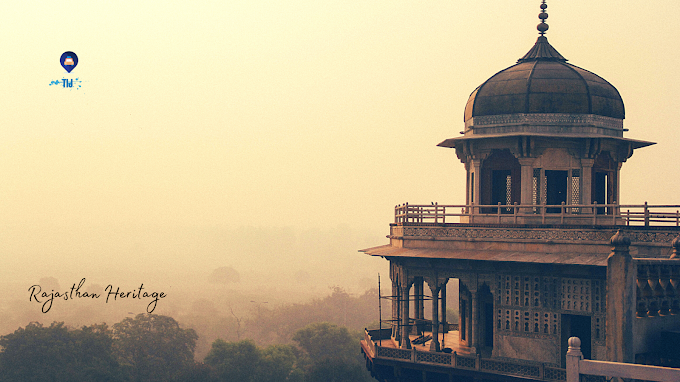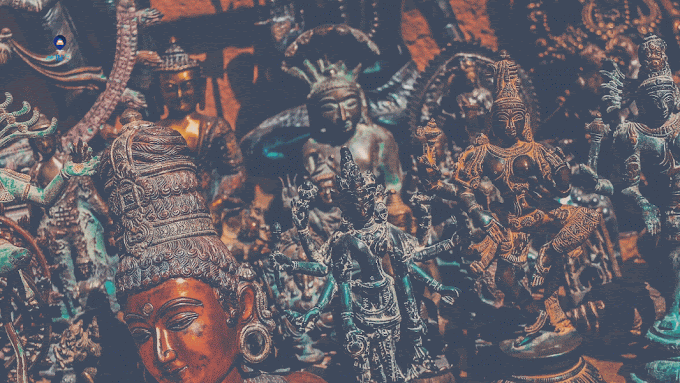Bagore Ki Haveli Mysteries
Information | Details
Situated within the Gangaur Ghat Marg of Udaipur in the kingdom of Rajasthan, Bagore ki Haveli is an expensive gracious palace which turned into built in the eighteenth century at the waterfront of Lake Pichola. Boasting of over one hundred rooms which have complex reveals performed up in replicate and glassworks, the haveli turned into built by the Prime Minister of Mewar Kingdom- Amar Chand Bawa. Beautiful paintings and work of art from the Mewar generation embellish the partitions of the palace; the Queen’s Chamber is the maximum famous of the lot which has on show very appropriate glass and reflects sculptures of peacocks. Restored and renovated time and again, the haveli has been sooner or later converted right into a museum that is thronged through no longer simply normal tourists but also history buffs and subculture explorers. The spotlight of the haveli is the famous Dharohar Dance Show this is held right here each nighttime which showcases the way of life and people's lifestyle of Rajasthan.
Taxi in Jodhpur is helped to find The best Places in Udaipur Rajasthan. but if you Want private Cab Services or Car Rental in Jodhpur then this is the best Service for Small families and Groups. Cab Service in Jodhpur
History of Bagore ki Haveli | Udaipur | Rajasthan | India
Bagore ki Haveli becomes built through Amar Chand Bawa, who became the gallant and anointed Prime Minister of the Mewar country at some point in the guideline of Maharanas Pratap Singh II, Raj Singh II, Ari Singh, and Hamir Singh for a long time between 1751 to 1778. After the demise of Amar Chand Badwa, the haveli changed into handed directly to the Mewar rulers who persisted extending the structure, layout, and location of the haveli. After almost 100 years in 1878, the haveli turned into handed directly to Maharaja Shakti Singh of Bagore who's credited with getting the splendid triple archway built. After the development of the archway, the haveli came to be officially known as ‘Bagore ki Haveli’.
Up till 1947, the haveli became possessed via the Mewars but after independence, the building fell into the hands of the Rajasthan authorities who used it to house authorities officials. After overlook and degradation of the haveli for nearly forty years, the authorities determined handy it over to West Zone Cultural Centre for restoration functions.
It turned into after this handover that the haveli was converted right into a museum. However, the authentic royal and grandiose look of the haveli turned into retained as was the gorgeous architecture and exquisite designs. For the same purpose, numerous royal Rajasthani families were consulted in order that the haveli doesn’t lose its charm and glory. Even for the maintenance, the best premium high-quality production became completed with lakeshore bricks and lime mortar. The unique motifs, work of art and frescoes were preserved, the damaged doors, windows and partitions had been repaired. And only the elements that have been beyond repair have been changed.
Layout | Bagore ki Haveli | Udaipur | Rajasthan | India
Boasting of wondrous and professional architecture, Bagore ki haveli is home to around 138 rooms that are all accomplished up and embellished with glass and replicate work. The constructing has numerous archways, spacious corridors, jharokhas i.E. Balconies, cupolas, water fountains and terraces, and so on. A walk down the inner segments of the haveli can also give you a glance into the more private quarters of the queens and the royal girls with their elaborate toilets, activity rooms, make-up rooms, bedrooms, worship rooms, and so on.
The very famous ‘Chamber of the Royal Ladies’ still boasts of a number of the original fine frescoes and artwork from the bygone technology. Other than the two glass crafted vibrant and spellbinding peacocks which can be a true testimony of the skilled craftsmanship, the indoor home windows have glass stained home windows and mural in a classic Mewari fashion. Some of the greater famous gadgets on display on the haveli encompass jewelry boxes, dice-games, chukkas, nutcrackers, pan packing containers, hand lovers, rosewater sprinklers and copper vessels, etc. Which are synonymous with the identity of the Rajput extended family.
Inside View | Bagore ki Haveli | Udaipur | Rajasthan | India
The haveli welcomes its site visitors with a marvelous spacious courtyard that houses a lovely storeyed lotus with a water fountain in between. The whole area is split up into three chowks- Kuan Chowk, Neem Chowk, and Tulsi Chowk. Kuan Chowk that translates to Well Chowk (‘Kuan’ meaning ‘properly’) is situated at the floor ground itself, which use to house the stables for the horses and had house stores that catered to the regular activities and necessities of the housekeeping body of workers. Neem Chowk is situated on the first ground was a better status chowk with brass doors and steeply-priced decor. This one became used to host dance performances for the journeying guests. Even these days, this phase is used to show dance and artwork forms.
Tulsi Chowk, alternatively, was specially designed and created for the princesses and the royal ladies. This segment homes the zenana and the internal chamber in which ‘ghoomar’ dance performances have been held and different leisure sports were done. Today, this chowk is a gallery that's reminiscent of the ancient days with a display of turbans and traditional women attire worn by using the queens and the princesses in their hay day.
In addition to the three chowks, the haveli also houses the Kaanch Mahal i.E. The passage finished up totally with mirrors and the Durrie Khana. These have been the section's special best for the men of the house. The biggest chamber within the entire haveli changed into Diwan- i -Khas that's currently the workplace of the Director of the West Zone Cultural Centre. Besides, it has a Shringar Kaksh which turned into utilized by girls for their make up and because of the dressing room. Sangeet Kaksh was utilized by the royal ladies to research song, dance, and musical units like santoor, sarangi, and many others. And Manoranjan Kaksh was used by guys to play indoor games like chess, chapped, ganjifa, etc.
Stay Tuned Stay Safe.
Tempo Traveller in Jodhpur is Better Service for Groups and Families.






0 Comments